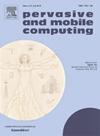基于频谱稀疏的灾害网络社区检测
IF 3.5
3区 计算机科学
Q2 COMPUTER SCIENCE, INFORMATION SYSTEMS
引用次数: 0
摘要
社区检测在灾难恢复和普适计算中起着关键作用,在这些领域中,识别有凝聚力的社会群体可以实现更有效的通信、协调和资源分配。在移动和资源受限的环境中,如应急响应系统或移动机会网络,社区检测方法必须平衡准确性和计算效率。在这项工作中,我们提出了一种新的方法,从原始图的稀疏表示中揭示社区结构,解决了普适和移动系统中对轻量级和可扩展算法的需求。具体来说,我们采用Spielman-Srivastava光谱稀疏作为预处理步骤,以减少边缘数量,同时保留支撑群落结构的关键光谱属性。然后在稀疏化图上应用模块化优化遗传算法。我们在合成基准和现实世界网络上进行的实验表明,即使在积极的稀疏化下,与最先进的基线相比,所提出的方法(即SSGA)也具有竞争力或更高的准确性。我们还分析了该方法的累积计算复杂度,并提供了基于截断谱分解和并行遗传操作的优化实现。结果证实,SSGA不仅准确、稳健,而且计算效率高,特别适合时间、能量和连接有限的普及和移动场景。本文章由计算机程序翻译,如有差异,请以英文原文为准。
Efficient community detection in disaster networks using spectral sparsification
Community detection plays a critical role in disaster recovery and pervasive computing, where identifying cohesive social groups enables more effective communication, coordination, and resource allocation. In mobile and resource-constrained environments such as emergency response systems or mobile opportunistic networks, community detection methods must balance accuracy with computational efficiency. In this work, we propose a novel approach that uncovers community structures from a sparse representation of the original graph, addressing the need for lightweight and scalable algorithms in pervasive and mobile systems. Specifically, we apply Spielman–Srivastava spectral sparsification as a preprocessing step to reduce the number of edges while preserving the key spectral properties that underpin community structure. We then apply a modularity-optimizing genetic algorithm on the sparsified graph. Our experiments, conducted on both synthetic benchmarks and real-world networks, demonstrate that the proposed method, namely SSGA, achieves competitive or superior accuracy compared to state-of-the-art baselines, even under aggressive sparsification. We also analyze the cumulative computational complexity of the approach and provide an optimized implementation based on truncated spectral decomposition and parallel genetic operations. The results confirm that SSGA is not only accurate and robust but also computationally efficient, making it particularly well-suited for pervasive and mobile scenarios where time, energy, and connectivity are limited.
求助全文
通过发布文献求助,成功后即可免费获取论文全文。
去求助
来源期刊

Pervasive and Mobile Computing
COMPUTER SCIENCE, INFORMATION SYSTEMS-TELECOMMUNICATIONS
CiteScore
7.70
自引率
2.30%
发文量
80
审稿时长
68 days
期刊介绍:
As envisioned by Mark Weiser as early as 1991, pervasive computing systems and services have truly become integral parts of our daily lives. Tremendous developments in a multitude of technologies ranging from personalized and embedded smart devices (e.g., smartphones, sensors, wearables, IoTs, etc.) to ubiquitous connectivity, via a variety of wireless mobile communications and cognitive networking infrastructures, to advanced computing techniques (including edge, fog and cloud) and user-friendly middleware services and platforms have significantly contributed to the unprecedented advances in pervasive and mobile computing. Cutting-edge applications and paradigms have evolved, such as cyber-physical systems and smart environments (e.g., smart city, smart energy, smart transportation, smart healthcare, etc.) that also involve human in the loop through social interactions and participatory and/or mobile crowd sensing, for example. The goal of pervasive computing systems is to improve human experience and quality of life, without explicit awareness of the underlying communications and computing technologies.
The Pervasive and Mobile Computing Journal (PMC) is a high-impact, peer-reviewed technical journal that publishes high-quality scientific articles spanning theory and practice, and covering all aspects of pervasive and mobile computing and systems.
 求助内容:
求助内容: 应助结果提醒方式:
应助结果提醒方式:


